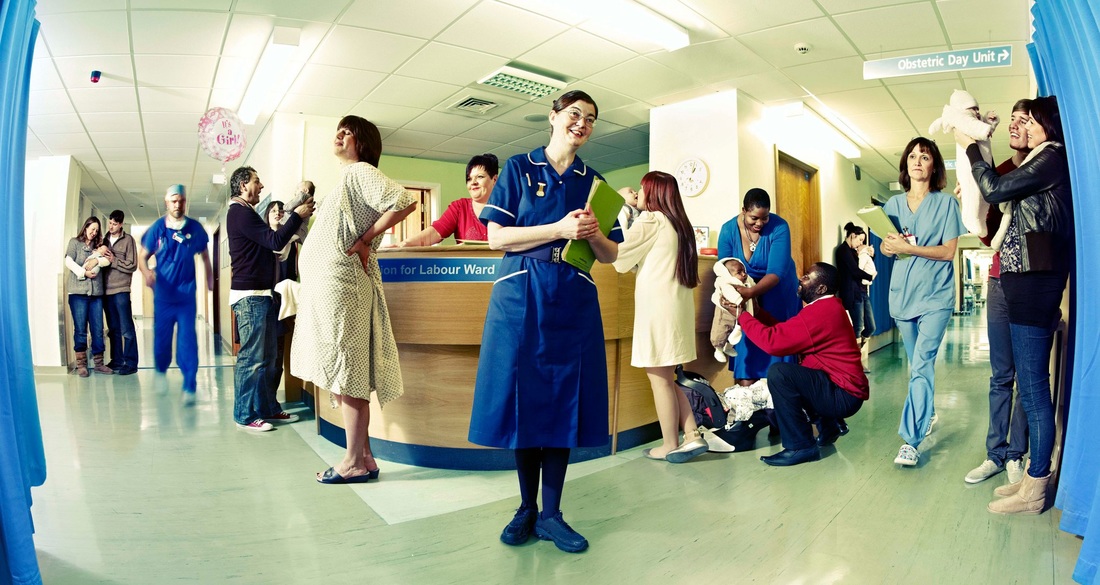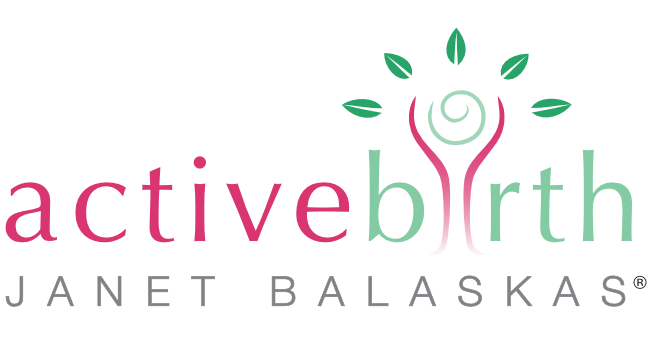
It’s high time the programme makers joined the birth revolution, writes Milli Hill
On 4th April 1982, I was a carefree seven year old, and therefore totally unaware that, as I played with my Pippa dolls in my dungarees, six thousand women were marching in Hampstead Heath for a woman’s right to give birth in any position she chose.
The rally, organised by founder of the Active Birth Movement Janet Balaskas, was protesting an incident at Hampstead’s Royal Free Hospital, where a woman was made to sign a disclaimer because she wanted to give birth on all fours. Those marching in 1982 were outraged that the hospital’s obstetrician felt Balaskas’s ‘active birth’ was ‘animalistic’, and wanted to ensure that all women delivered lying down.
Given that this sparked outrage thirty three years ago, it seems a little ironic that if you turn on the Channel 4 hit show One Born Every Minute, the position you’re most likely to catch a labouring woman is…on her back, on a bed.
Whilst the programme has an army of fans, a petition against it from birth coach Alexia Leachman, who claims it ‘scares the crap out of women’ has recently gained over a thousand signatures, and there are many midwives and activists who despise the highly medicalised version of birth they feel it presents, including Janet Balaskas herself:
“I am passionate about the banning of One Born!”, she told me. “Frankly it shocks me that the whole nation is continually bombarded with images of these outdated practices of birth. The films that generally appear in the programme reveal no comprehension of the need of women to move freely. Neither is it in any way understood that birth is a hormonal process calling for deep privacy and very discreet and minimal presence of other people.”
Also vocal in her dislike of One Born is midwife Virginia Howes, who started a Facebook page in protest at the programme three years ago, because, “…every midwife I spoke to was saying how awful it was, yet no one was speaking out.” The page, ‘One Born Every Minute – The Truth’, has over ten thousand followers, and aims, says Virginia, to highlight practice in the programme that, “is not evidence based or woman centred”. “If this really is how birth is in maternity units”, she adds, “then we should be ashamed as a profession.”
There’s an argument, of course, that the intimate act of birth should not even be filmed at all, and that, if we don’t agree with birth on TV or the way the programme portrays it, we should simply vote with our remote. But, whilst it’s true that birth is a very private event, the fact is, women don’t want to switch off. In a culture where several decades ago birth was taken out of communities and hidden away in the hospital, we are desperate for a glimpse of what it’s really like.
And unfortunately, turning to One Born is giving so many of the wrong messages, says doula and founder of Tell Me A Good Birth Story, Natalie Meddings. “My organisation runs a database of women who have had positive birth experiences”, she explains. “I just don’t feel that the kind of births they tell us about are represented on One Born. On the show we see so many panicked faces, women on their backs, midwives running in corridors. There’s the occasional normal birth shown but it’s often – somewhat ironically – portrayed as a bit ‘alternative’ or ‘abnormal’.”
“It’s really important, though, that this debate doesn’t get bogged down in natural versus medical birth”, she adds. “We need to be talking about all women’s rights to have their basic needs met in labour, and these are simple: dim lighting, low voices, privacy. These simple needs are not being met in labour wards across the country, and this programme perpetuates that.”
There’s a chicken and egg question here: does the programme reflect reality, or shape and influence it? One suspects a bit of both, but given the following that One Born has, does it not have a responsibility to educate women about their options in birth, and offer them a glimpse of the future, rather than something that resembles the labour wards of the 1970’s?
Channel4 have commented that the programme provides a, “rounded insight”, and that it is “a fair and accurate portrayal of the inner workings of the hospital’s maternity ward, which shows a wide spectrum of different birthing stories.” But surely, with the majority of births they air being women on their backs in stark, brightly lit environments, the programme makers could be doing more to raise awareness of these ‘simple needs’, and in doing so show that the birth environment can and does have a huge influence on how a birth pans out?
The potential for positive change is far reaching. Midwife Amanda Burleigh, who has campaigned for over a decade for ‘delayed’ or ‘optimal cord clamping’, says that, in spite of the fact the practice is now part of NICE guidelines, she has only seen it happen on One Born on one occasion:
“Apart from that one referral to leaving the cord intact I have only seen or heard of cords being immediately cut. It would be great to see more of it on the programme – I think the education factor is extremely important. Parents are going to watch One Born – showing them these options would improve informed choice and make them able to improve their birth.”
Another midwife, Jenny Clarke, campaigns widely for all newborns to have skin to skin contact, regardless of whether they are born vaginally or via caesarean, and would like to see this vital start to healthy bonding promoted in the programme:
“I’d love to see more skin to skin and respect for the sacred hour after birth – one skin to skin story on One Born could change so much”, she tells me, “Maybe it’s not shown because women feel they can’t show skin on national TV? Their babies are missing out and this is not an informed choice! I used to scream ‘Skin to skin!’ at the TV”, she adds. “Now I just don’t bother watching.”
Those of us who do continue to watch – and I’m one of them – feel that there is often an imbalance of power on the programme that is embodied in phrases like, “Hop up on the bed”, or a midwife saying, “Now we are just going to do this”, rather than offering the information a woman needs to give valid consent. It could be said that this is just down to the way the programme is edited, but if this is the case, there is a real argument for redressing this, perhaps with a simple voiceover. At the moment, many women do not know that they have a right to decline or consent to every intervention, something that UK charity Birthrights is working hard to change.
“It’s become normal in our culture to disregard women’s experiences of birth”, says Birthrights co-chair Rebecca Schiller. “Programmes like One Born could have a powerful role in showing how vital treating women with dignity during childbirth is, and even helping raise awareness of women’s rights in the birth room.”
Information, basic needs, choice, rights, dignity – it’s the lack of attention to these aspects of maternity care that cause some birth workers to switch off or start campaigns and petitions. More than this, perhaps, is the rather cold and sterile version of birth it offers, when many women feel that it should be given more respect as, as Bridget Baker, chair of Doula UK and one of the protesters at Hampstead Heath in 1982 puts it, “a safe and empowering rite of passage, in which a woman is treated with respect, dignity and love.”
“One Born should be celebrating the positive energy, the power and beauty of birth”, she adds “Unfortunately with very few exceptions, it is perpetuating the medical model of birth, disempowering women, lowering parents’ expectations of birth, thereby sabotaging the progress that has been made.”
Perhaps we have made progress, but I can’t help feeling we have a long way to go before women have what the marchers in ’82 called, ‘Birth Rights’. To make truly free decisions, we have to be given the full information of what is available, and the narrow view most women are shown by One Born just isn’t fulfilling that.
My own daughter is now 7, and I’d like to hope that the programme makers take on board some of these concerns before she is old enough to stay up and watch it. And if women are still on their backs and unaware of their choices by the time she’s old enough to have babies herself? Well then, I might just have to march on London myself.
________________________________
 Milli Hill is a freelance writer and the founder of the Positive Birth Movement. This article originally appeared on her website for the Positive Birth Movement and is reproduced here in full with permission. Find her on twitter @millihill
Milli Hill is a freelance writer and the founder of the Positive Birth Movement. This article originally appeared on her website for the Positive Birth Movement and is reproduced here in full with permission. Find her on twitter @millihill

